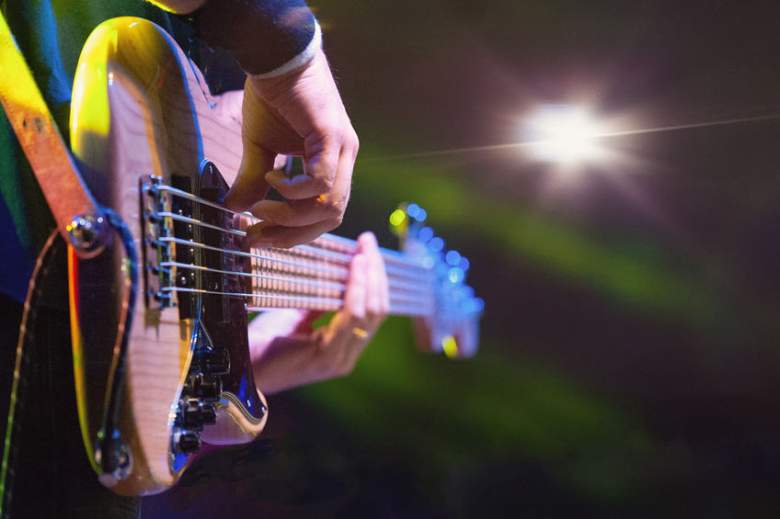
Mid-focused instruments are easy to amplify and sound great mic’d up for house sound. The equation is a little different when looking at rigs for bass, however. In order to generate the kind of power needed for most gigs, you’re looking at getting a head-cab combination.
True, some people go with a DI box only these days, but in order to move some air on stage, a full rig is the way to go. What follows are modern Class D amps for anyone from novice to professional looking for high quality, high-output bass amps, with testing notes provided by regular gigging bassist Rick Gauthier, Jr. If you’re the strings part of the rhythm section, discover the best bass amps for gigging.

|
Amazon Customer Reviews
|
Price: $1,299.99 Shop at Amazon | Shop now Read our review |
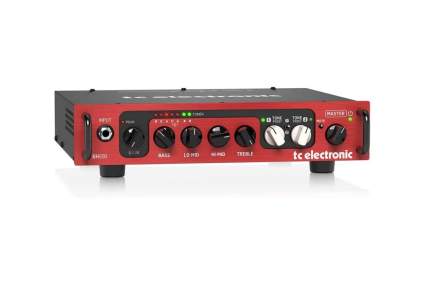
|
Amazon Customer Reviews
|
Price: $599.99 Shop at Amazon | Shop now Read our review |

|
Amazon Customer Reviews
|
Price: $849.99 Shop at Amazon | Shop now Read our review |
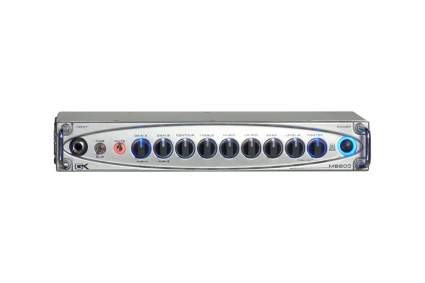
|
Amazon Customer Reviews
|
Price: $949.00 Shop at Amazon | Shop now Read our review |

|
Amazon Customer Reviews
|
Price: $649.99 Shop at Amazon | Shop now Read our review |
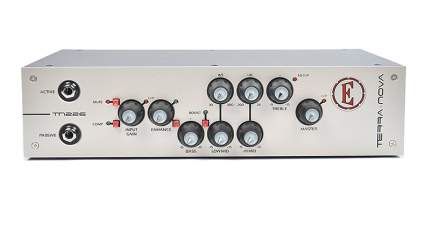
|
Amazon Customer Reviews
|
Price: $299.99 Shop at Amazon | Shop now Read our review |
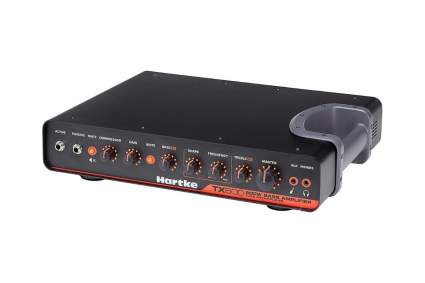
|
Amazon Customer Reviews
|
Price: $469.99 Shop at Amazon | Shop now Read our review |
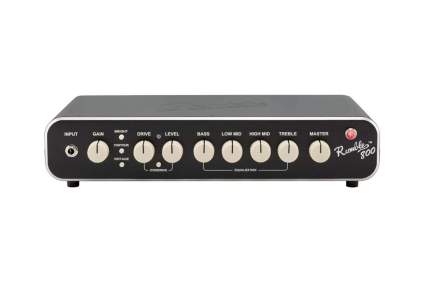
|
Amazon Customer Reviews
|
Price: $749.99 Shop at Amazon | Shop now Read our review |
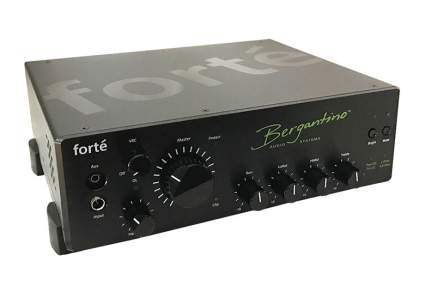
|
|
Price: $949.00 Shop now at Bergantino | Shop now Read our review |
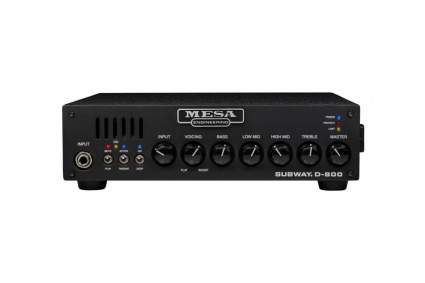
|
|
Price: $899.00 Shop now at Mesa Boogie | Shop now Read our review |
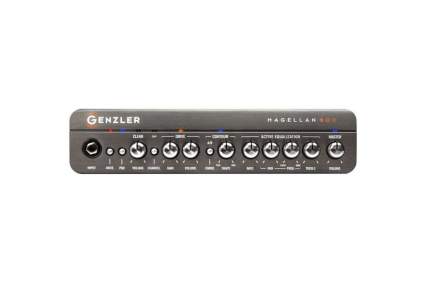
|
Amazon Customer Reviews
|
Price: $1,059.99 Shop at Amazon | Shop now Read our review |
-
1. Darkglass Microtubes 900 V2
Pros:- Wide variety of tones
- Intuitive control and I/O set
- 900 watts should cover virtually all applications
Cons:- Expensive
- No tuner out
- Dialing in the exact right sound make take some time
Darkglass have been on a tear of late, releasing a spate of excellent pedals, amps, and cabs and finding a home with many bassists where previously there lived vintage gear. Partly that’s down to the exceptional quality of their gear, while the other part is evident in this very unit.
This is the second version, which upgrades what was formerly a four-band EQ with a six-band EQ with LED-lit sliders. The Gain knob adjusts the pre-EQ volume and gives you flexibility between totally clean and a bit of breakup. The Gain knob is further governed by the VMT/B3K switch, which selects between a modern percussive sound (B3K) and a warmer vintage tone (VMT). There’s also a switch for matching Passive or Active pickups, and of course a Master volume knob and a Mute button.
The rest of the controls modify the Microtubes Engine, which Darkglass calls an ‘extra channel.’ Effectively, this channel allows you to dial in a usable combination of compression, drive, and EQ that pushes you out ahead of a mix. You can use this section for heavy drive, light breakup, and anything in between. This section is controlled with Comp, Drive, Level, Tone, and Blend knobs.
If you were to replicate this on a pedalboard, it’d be like changing amp channels and stepping on a boost and a compressor all at once. As a matter of fact, this is controllable with the Intelligent Footswitch from Darkglass for that express purpose. A switch on the front of the amp enables it, but really, you’ll want the switch.
On the back panel, there are switches for 2/4 ohms, Post and Pre EQ and Ground Lift for the DI out, Footswitch in, FX send and return, Aux In, Headphone out with independent volume control, MIDI input, USB input, and a Cab Select for three cabinet impulse response emulations for the DI out.
Rick’s notes: Large spectrum of sounds in this head, from smooth vintage tone to modern sounds. Very easy to use interface, choosing between the vintage series preamp and the more aggressive Mircotubes preamp.
If you want something for driven sounds, go for the Alpha-Omega 900 instead.
See The Bass Channel demo for an overview of all it can do.
These are pricey, no question. Both this version and the original version can be found used on Reverb, sometimes for a considerable savings.
Specs:
- Wattage: 900 watts
- I/O options: DI out
- Speaker output resistance: 2 or 4 ohms
- Effects loop?: Yes
- On-board compressor?: Yes
- Dimensions: 10.5 by 10 by 2.75 inches
- Weight: 6.39 lbs.
- Country of manufacture: Finland
Find more Darkglass Microtubes 900 information and reviews here.
-
2. TC Electronic BH800
Pros:- TonePrint enabled for effects
- Built-in tuner
- Relatively inexpensive for the power
Cons:- TC Electronic not renowned for their longevity
- TonePrint slots useless if you have external effects or don't use any
- Footswitch controller must be bought separately
Born from the BG250 we included on our best bass combo amps post, this 800-watt head brings all of TC’s technological advances into the compact bass head game. The real key to this is the two TonePrint slots, which are independently adjustable with the two knobs on the right. Utilizing their Switch-3 pedal, you can switch them on or off separately.
The TonePrint slots allow you to load up octave, compression, drive, chorus, flange, and vibrato effects. Of course, it’s TonePrint, so you can edit them extensively on your computer first to get a completely customized sound. Definitely a key differentiator here.
Otherwise, controls include Gain, a four-band EQ, and a Master volume. There’s a built-in tuner on the front of the unit, as well as a Mute switch so you can tune in silence. The EQ is set to boost or cut frequencies, and of course the DI out can be set pre or post.
If, for some odd reason, you don’t require 800 watts, there’s a 250 watt and a 550 watt version, too.
Rick’s notes: Great sound overall, fantastic reliability, and extremely user friendly controls. Priced for a hobby player, built to last for a pro with plenty of extra power and features to get you through anything.
The Scott’s Bass Lessons demo is a great primer for this amp.
These aren’t especially common used, but a quick look on Reverb may be worth it to see if you can net a savings.
Specs:
- Wattage: 800 watts
- I/O options: Aux in, USB, headphone jack, and DI out
- Speaker output resistance: 4 ohms
- Effects loop?: No
- On-board compressor?: Yes (using a TonePrint slot)
- Dimensions: 10.8 by 2.7 by 11 inches
- Weight: 9 lbs.
- Country of manufacture: Thailand
-
3. Aguilar Tone Hammer 500
Pros:- Great for driven sounds with AGS
- Tuner out and effects loop
- Super light
Cons:- No user-serviceable fuse
- Somewhat noisy fan
- Other options may handle very clean sounds better
Aguilar’s natural and neutral sound reproduction has served many a bassist and acoustic guitar player well. They make reliable, straight-forward units that travel well and play nicely in a variety of settings.
Controls on this little beast include Gain, four-band EQ, Master volume, and Drive. The last of these is a proprietary Aguilar design called “Adaptive Gain Shaping”. Both the effects loop and the DI out are conveniently placed on the front of the unit, as is a -10dB pad switch for active pickups. The back panel is a spartan affair, but does include a tuner out.
As with the TC above, you can get this in a 350 version for under $500.
Rick’s notes: Crisp tight tone, useable in any style of music. Could be described as modern dry tone. Really pleasant sounds overall. You’ll probably never hear anyone complain about this one.
Check out The Bass Channel demo for sound samples.
These are easy to find used on Reverb and some of the selling prices are comparatively dirt cheap.
Specs:
- Wattage: 500 watts
- I/O options: DI out and tuner out
- Speaker output resistance: 4 or 8 ohms
- Effects loop?: Yes
- On-board compressor?: No
- Dimensions: 10.75 by 8.5 by 3 inches
- Weight: 4 lbs.
- Country of manufacture: U.S.A.
Find more Aguilar Tone Hammer 500 information and reviews here.
-
4. Gallien-Kruger MB800
Pros:- Classic GK tone
- Backlit knobs for easy viewing
- Only five pounds
Cons:- Relatively high rate of defective units
- Feature set limited for the price
- Can be noisy in some setups
Perhaps looking a bit more early Aughts than the other options on this list, this GK option nevertheless brings that certain sound to the Class D, compact head market. They just have a slightly different way of doing things over there that offers a solid counterpoint to other offerings.
Immediately evident from the controls is the fact that you get two gain circuits on this amp, controllable with an external footswitch. Otherwise, controls include a four-band EQ, Contour, a separate Level for the B channel, and a Master volume.
There’s a Mute and a -10dB pad switch on the front, a pre-post EQ switch for the DI out on the back, and a switch for using the final output jack for either headphone or line out purposes. By pushing the Master knob, you can engage a limiter for use in high volume situations.
It’s also super short at less than two inches. It’ll tuck into some gig bags pretty easily. They also offer the MB500 if 500 watts is enough, as well as the super-small MB200.
Rick’s notes: The GK sound is legendary and this one follows that mold with some major improvements. Very bright sounding amp overall, easy to dial in your sound on this one. Hard not to love.
The BasstheWorld demo will provide an excellent overview.
While somewhat rare, it’s worth looking on Reverb for a used unit before buying.
Specs:
- Wattage: 800 watts
- I/O options: DI out, tuner out, and headphone/line out
- Speaker output resistance: 4 or 8 ohms
- Effects loop?: Yes
- On-board compressor?: No
- Dimensions: 11 by 9 by 1.75 inches
- Weight: 4.9 lbs.
- Country of manufacture: Unknown, possibly China
Find more Gallien-Kruger MB800 information and reviews here.
-
5. Markbass Little Mark III
Pros:- Pre or Post EQ DI out
- Tuner out and effects loop
- Very compact
Cons:- No on-board compressor
- Price can vary quite a bit
- No headphone or emulated output
Markbass makes distinctive looking and sounding amps, and this is their flagship. All the standard bells and whistles are here, including a couple of added details that help it stand out.
The obvious controls of Gain, four-band EQ, and Master are all here. The VPF knob stands for Variable Pre-shape Filter and allows you to further alter the EQ. The VLE knob stand for Vintage Loudspeaker Emulator allows you to dial in cab emulation on the DI out, which also has a separate volume knob. The back panel has the expected Pre/Post EQ switch and Ground Lift for the DI out.
The input and output options on this are interesting, too. In addition to the standard 1/4 inch in, there’s an DI in for use with mics and acoustic basses. There’s also a tuner out and an effects loop. All this adds up to supreme flexibility and should cover virtually all of your needs.
Rick’s notes: Tight and dry, exceptional mid response and cuts through a mix just right with any bass. Super reliable platform with easy to use controls.
The Jonathan Lai demo skips all the talking if you just want to hear some sounds.
You should have no trouble finding used units on Reverb for a significant savings from new.
Specs:
- Wattage: 500 watts
- I/O options: Tuner out, DI out, line out, and XLR input
- Speaker output resistance: 4 or 8 ohms
- Effects loop?: Yes
- On-board compressor?: No
- Dimensions: 10.87 by 9.84 by 3.27 inches
- Weight: 5.07 lbs.
- Country of manufacture: Indonesia
Find more Markbass Little Mark III information and reviews here.
-
6. David Eden Terra Nova TN226
Pros:- Unique, flexible EQ controls
- Dedicated inputs for passive and active pickups
- Great low-end tone
Cons:- Control layout can be confusing for some
- Compression level is fixed and on/off only
- Switches don't feel especially robust
This offering from Eden also does things just a little bit differently in case nothing else on this list cuts it for you. It’s probably not quite fair to call Eden gear sleeper stuff, but it certainly isn’t quite as ubiquitous as some of the other brands out there. This is their mid-level offering, perfect for the working musician.
The control set offers quite a lot of flexibility. Across the front panel, there are switches for Mute and Comp(ressor), Input Gain, a switchable Enhance knob like on the Markbass above, a four-band EQ, and a Master knob. That four-band EQ is “semi parametric” with uniquely flexible shift knobs for the Low and High Mid. Also, there’s an input each for Passive and Active pickups. There’s also a Boost switch which is footswitch controllable.
On the back, there are the two speaker outs, an aux in, headphone jack, DI out, effects loop, and a tuner out. Naturally, there are switches for pre/post EQ, Ground Lift, and DI out line level. Admittedly, 225 watts will really only suffice for your smaller gigs and possibly in the studio, but you can also get a 500 watt version in this line.
Rick’s notes: That deep Eden tone is famous and this amp does not disappoint. Easy to get nice, thick low end out of this one with minimal effort.
The ibassmag demo will show you want you need to know.
These are pretty rare used, but it could be worth a look on Reverb before buying.
Specs:
- Wattage: 225 watts
- I/O options: Separate Active and Passive inputs, DI out, tuner out, aux in, and headphone jack
- Speaker output resistance: 4 ohms
- Effects loop?: Yes
- On-board compressor?: Yes
- Dimensions: 12.75 by 6.9 by 3.1 inches
- Weight: 4.7 lbs.
- Country of manufacture: China
Find more David Eden Terra Nova TN501 information and reviews here.
-
7. Hartke TX600
Pros:- Tube preamp
- Effects loop
- Brite switch adds high-end attack
Cons:- No tuner out
- Wattage rating may be overstated from manufacturer
- Some find the mids scooped
Class A amps are sometimes sought after for their immediacy of response and transient performance. This amp combines a vintage style 12AX7-driven Class A preamp with the immensely powerful Class D power section for a perfect combination of tone and ability.
Controls include a Master knob, three-band EQ with mid Shape knob, Gain, and Compressor level to dial in the 10:1 on-board compression. Again, there are two inputs for Active and Passive pickups, as well as the aux in and headphone out. Mute and Brite switches round out the front panel.
The back panel holds no surprises with the speaker outs, DI out, Ground Lift switch, and effects loop. For being new, this has a distinctly 90s look, but hey, you don’t buy these for how they look. The carrying handle is a nice touch for ease of use.
This also comes in a 300 watt version. Other offerings from Hartke in a similar form factor include the HALX5500, HALX8500, and LH500.
Rick’s notes: Hartke has long been known to deliver booming lows and crisp bright mids and highs. This new series is fantastic and can deliver everything you ever need in a pro package at one of the lowest price points in this amp category. Really tight amplifier with easy to use features.
Watch Victor Wooten demo this reasonably priced offering.
With some luck, you should be able to find these used on Reverb if you want to try it out for less.
Specs:
- Wattage: 600 watts
- I/O options: Separate Active and Passive inputs, aux in, headphone jack, and DI out
- Speaker output resistance: 4 to 8 ohms
- Effects loop?: Yes
- On-board compressor?: Yes
- Dimensions: 14 by 10.6 by 2.6 inches
- Weight: 7 lbs.
- Country of manufacture: China
-
8. Fender Rumble 800 v3
Pros:- Multiple pre-EQ voice shaping options
- Effects loop
- Overdrive circuit
Cons:- Longevity may be a question
- No tuner out
- No on-board compressor
This offering would make a fine first stage-ready bass amp. Fender have included a number of features that will let you dial in a solid bass tone, utilizing unique switching for different voices.
The knob set is utilitarian with Gain, four-band EQ, and a Master knob. There’s an Overdrive section with its own Drive and Level knobs that can be activated with a footswitch. A set of three switches on the right — Bright, Contour, and Vintage — work as pre-EQ shaping options. Bright is a high-end boost, Contour is a mid-scoop, and Vintage is tube emulation.
Again, no surprises on the back panel. Dual speaker outputs, DI out, aux in, headphone jack, and an effects loop. These are super loud, but tend toward the muddy side, so those extra EQ shaping options will come in handy. There’s bound to be a usable sound for a wide variety of players and basses in this box.
Rick’s notes: Perfectly serviceable amp that will work best for beginners, yet with plenty of pro-level function and power.
The Tyler Spicer extra-long demo should show you everything you need to know.
You might be able to find one of these used on Reverb to save some money.
Specs:
- Wattage: 800 watts
- I/O options: DI out, aux in, and headphone jack
- Speaker output resistance: 4 ohms
- Effects loop?: Yes
- On-board compressor?: No
- Dimensions: 13.75 by 7.19 by 2.68 inches
- Weight: 5 lbs.
- Country of manufacture: Indonesia
Find more Fender Rumble 500 v3 information and reviews here.
-
9. Bergantino Forte
Price: $949.00Pros:- Outstanding tone
- One of the better built-in compressors
- Studio-quality DI out
Cons:- Somewhat limited I/O options compared to rivals
- No tuner out
- Pricey
This is the quintessential compact bass amp, distilling everything that’s great tone-wise about the company’s flagship B|Amp into a lower price point and a super-tiny enclosure.
Controls on this unit include Input and Master volume, Variable Ratio Compressor (VRC), a four-band EQ, and Bright and Mute switches. There’s an effects loop and a DI out with ground lift, the latter of which is software switchable between pre- and post-EQ. Rounded out with an aux in and headphone jack for practice and you’re ready to roll.
They now also offer this in a 1,200 watt package called the Forte HP.
Rick’s notes: Tight, crisp, focused intense low end. Clean, bright mids. Crisp and clear treble that cuts through the mix of a band in the perfect set spot. Can’t say enough about this one, it really stands above the rest in this amp category.
The Scott’s Bass Lessons demo will tell you what you need to know about this.
At time of this writing, there were a few of these used on Reverb for a decent chunk off the new price.
Specs:
- Wattage: 800 watts
- I/O options: DI out, stereo out, headphone jack, and aux in
- Speaker output resistance: 2 or 4 ohms
- Effects loop?: Yes
- On-board compressor?: Yes
- Dimensions: 10.5 by 8.375 by 3.75 inches
- Weight: 6 lbs.
- Country of manufacture: U.S.A.
-
10. Mesa Boogie Subway D-800
Price: $899.00Pros:- Deep switch adds harmonics
- Voicing switch allows for good tone control
- Excellent clean headroom
Cons:- No on-board compressor
- No effects loop
- No tuner out
Certainly a brand intimately familiar to guitarists, Mesa makes an amp head that can hang with the best of them. Particularly compared to the Darkglass above, this is a fairly straightforward endeavor, closer to the Bergantino and with all the engineering focused on providing a wide-open palette for your bass.
Controls are uncluttered and include Input volume, four-band EQ, Master volume, and a unique Voicing switch. The Input volume is governed by the Mute and Active/Passive switch, while a Deep switch engages harmonics to enhance low-end response.
The Voicing switch is vintage Mesa, ranging from Flat to mid-scooped with low and high end boost. Naturally, the back panel offers the full suite of switching to control the DI out. No effects loop, however.
Rick’s notes: This amp is one of the cleanest and clearest signals you’re likely to find. Really lets the tone of the bass do all the talking with very functional EQ controls. Highly useful for any style of music and comes with a carry case.
Watch the Premier Guitar demo for an overview of sounds and functions.
You can find these for over $100 less than new when buying used on Reverb.
Specs:
- Wattage: 800 watts
- I/O options: DI out, headphone jack, and aux in
- Speaker output resistance: 2 or 4 ohms
- Effects loop?: No
- On-board compressor?: No
- Dimensions: 11.12 by 10.59 by 3.04 inches
- Weight: 5.5 lbs.
- Country of manufacture: U.S.A.
Find more Mesa Boogie Subway D-800 information and reviews here.
-
11. Genzler Magellan 800
Pros:- Two channels for clean and drive
- Dual Contour control offers a wide variety of voicing
- Simple control layout
Cons:- No on-board compressor
- If you only play clean, the drive channel is a waste
- Larger than competitive options
This two-channel offering allows for a wide variety of tones. While some focus purely on clean power, this gives you the ability to dial in sounds as you need them.
Controls on this include Clean channel volume, Drive channel Gain and Volume, four-band active EQ, Master volume, -8.5dB Pad switch and a Mute switch. The Drive channel increases the harmonics and softens the highs and lows for a mid-focused driven sound.
There’s also a Contour control set with a Shape knob that controls two different curve options. Curve A boosts lows and cuts the mids as you turn the Shape up. Curve B attenuates the highs, boosts the lower mids, and rolls off the low end. Curve B is meant to emulate vintage-sounding amps. The Curve you’re using is indicated by blue and amber LEDs.
On the back you get an XLR out with Mic/Line level, Pre/Post EQ, and Ground Lift switches. There’s also a footswitch in to control the channel, an effects loop, tuner out, aux in, headphone jack, and, of course the speaker outs.
This can also be had in a cheaper 350 watt version.
Rick’s notes: Between the Contour contols and the two channels, any sound you need should exist in here somewhere. You can go clean and pristine, but a little tweaking can give you new sweet spots, too.
Watch the Guitar Interactive demo for a small sample of the sounds on tap in this amp.
These aren’t especially common used, but you might consider selling some gear on Reverb to help finance your purchase.
Specs:
- Wattage: 800 watts
- I/O options: DI out, tuner out, footswitch in, headphone jack, and aux in
- Speaker output resistance: 2 .67, 4 or 8 ohms
- Effects loop?: Yes
- On-board compressor?: No
- Dimensions: 11.25 by 10.5 by 3 inches
- Weight: 6.25 lbs.
Find more Genzler Magellan 800 information and reviews here.
What Makes a Good Bass Amp for Gigs?
As a guitarist, I've played many guitar amps in my day, so I'm very comfortable with the requirements for those rigs. And like any good guitarist, I have a bass of my own, so I've even experienced my fair share of small bass combos. When it comes to earth-shaking low-end power, though, that's not really my arena. Oh, I understand the tech perfectly well, but my actual experience is limited.
In order to get my facts straight on the matter, I reached out to Rick Gauthier Jr., full-time professional bassist and semi-pro bacon eater. A founding member of Boston/Brooklyn outfit The Vital Might, Rick has also played in Romeo Dance Cheetah and Hello Weekend. More recently, he's providing low end for party band The 1999.
We discussed the needs of the modern working bassist and put together this list. All of these are compact bass amps using Class D power amp sections to generate at least 300 watts and usually more like 800 - more than enough to power you through virtually any venue.
Naturally, you'll have to pick yourself up a cabinet to make these work. All of these manufacturers make matching cabs, so go with those if you're not sure where else to look.
What Is a Class D Amplifier?
Since the power requirement for bass is so much greater, the type of amp — each organized into a Class — necessarily must change. The vast majority of guitar amps are Class AB, though you'll occasionally see Class A among the ranks of the boutique and handwired.
As a general rule, you can get by with fewer watts in a Class A amp than Class AB and still cut through the mix. (There are many factors to be weighed, of course. For more on this, you can read about the classes here.)
When it comes to modern bass amp design, Class D has become the go-to answer. Because Class D amps can, in theory, reach 100 percent efficiency, they're capable of producing far more power than other types. Modern design approaches mean that the tonal quality — not to mention size and price — is improving, as well.
In fact, some of the mini guitar amp heads in this post use Class D power amp stages to wring stage-ready volumes out of incredibly small packages.
What Wattage Bass Amp Do I Need?
Unlike guitar amps, which don't require nearly the same amount of power, when considering gigging bass amps, you don't want to go below 100 watts or you risk not generating enough sensation of bass.
Typically speaking, 400 watts or more is virtually required. You can get by with fewer watts if you're using a DI as well, where you can send your signal to the front of the house and get a huge power boost.
This list has options between 225 and 900 watts, depending on your need.
Best Cheap Bass Amps for Gigging
If the options on this list are a bit out of your budget, there are a few options with good power for considerably less. These are worthy of gigs but are inexpensive enough for beginners, too.
- Peavey MiniMAX 600-Watt Mini Bass Amp Head
- Behringer BXD3000H Ultra-Lightweight 300-Watt 2-Channel Bass Amplifier
- TC Electronic BAM200 Bass Amplifier Head
- Ampeg PF-350 Bass Amplifier Head
See Also: